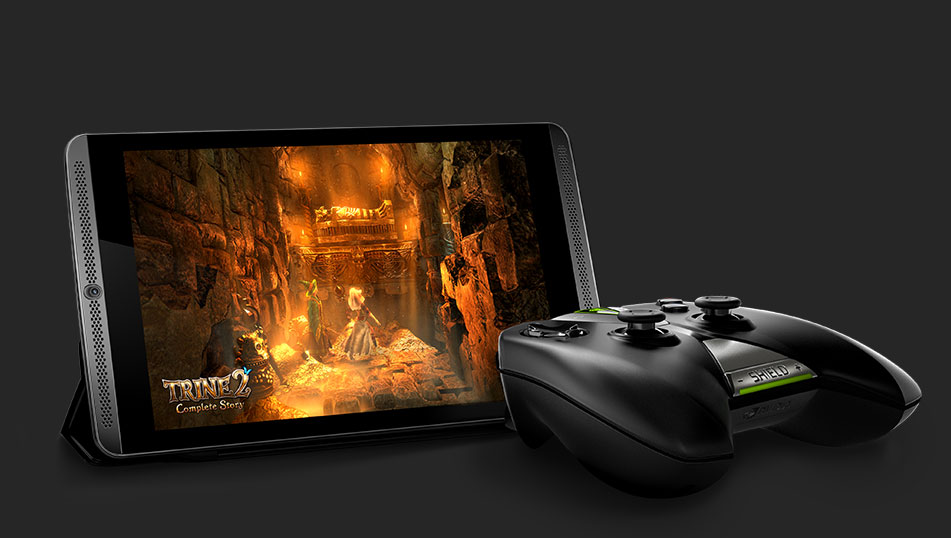The Nvidia Shield Tablet Is Coming for You, Game Consoles. Watch Out
Somewhere, PC gamers are cackling with delight.

Dedicated game consoles are going to die someday. We don’t know when, and we don’t know how, but it’s pretty much an inevitability of technology at this point. Nvidia’s Shield tablet looks to do the job by replacing your console with a convenient way to bring your PC game library to your living room—or anywhere else.
The tablet runs on Google’s Android OS, which allows it to play any Android-based games natively on the tablet, and it pairs with a familiar, Xbox-style Shield wireless controller. It plays these games beautifully, too, with the Tegra K1 processor that Nvidia proudly touts as the world’s fastest mobile processor.
The Shield’s main asset, though, is what it does for standard PC gaming. Much like the OnLive system which allows you to play games over the Internet which are actually being processed on a OnLive’s servers or Nintendo’s Wii U tablet controller, the Shield tablet is capable of streaming games to the tablet’s display or an HDMI-capable TV which are actually being played on your PC (equipped with a GeForce GTX 600 series GPU or above).
Nvidia’s existing Shield portable console can do most of that, too, but the tablet also takes things a step further by filling in functions currently tasked to separate devices. Not only is it a portable gaming device, but it becomes a gaming console when hooked up to your living room TV and a tablet computer whenever you need it. It’s also the first gaming tablet with the ability to stream gameplay directly to Twitch, which is sure to be a huge draw for mobile gamers, as the native Twitch streaming on PlayStation 4 and Xbox One has caused an explosion of game streaming since the consoles debuted.
That’s what consoles have to fear: devices that can do everything. The Shield tablet is currently available in a 16GB Wi-Fi model for $299 and a $399 32GB Wi-Fi/LTE model. Sadly, the controller is separate at $59, the cover is $39, and you’ll have to get your own mini-HDMI cable. If you can’t wait, you can preorder one right now (and see more details) on Nvidia’s site.
There are still a few hurdles a tablet like this has to overcome before it’s game over for game consoles. The biggest one is exclusive content. It’s hard to convince consumers to spend money on new products when all they offer is a new way to use games that those consumers already own and have other means of playing. Making the device useful is a tablet is a start, since people already buy tablets, but most of those would-be tablet buyers already have a brand of tablet they’re comfortable with.
For a device specifically tailored to digitally distributed games you can play on a portable device or stream to your TV to catch on, it’s going to need something gamers can’t get out of devices they’re already used to buying. That’s kind of hard when the entire point of a device is to replicate and replace things people already own.
So, game consoles are probably safe from Nvidia’s Shield at this point, but it looks like a lot of fun for early adopters with some extra money to spend. At worst, it’s a solid proof of concept for the future of gaming. For the rest of us, we’ll probably wind up waiting until every tablet, or even smartphone (or at least the ones with the biggest market share), has this functionality built in, and we’ll suddenly find ourselves losing our need for consoles and gaming this way without ever making a conscious choice on the matter.
(via The Verge)
Are you following The Mary Sue on Twitter, Facebook, Tumblr, Pinterest, & Google +?
Have a tip we should know? tips@themarysue.com